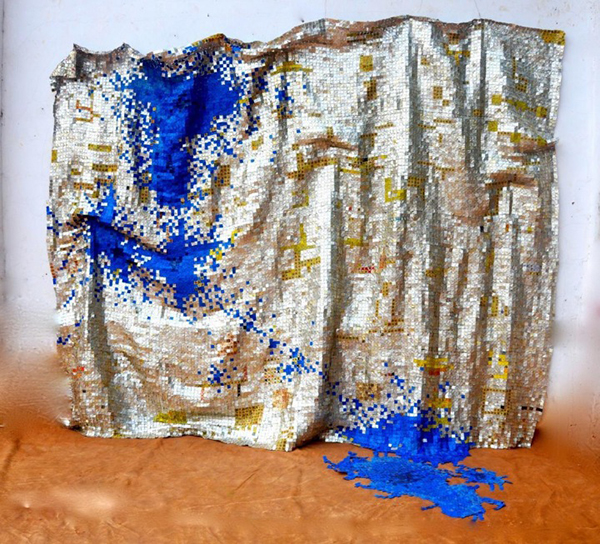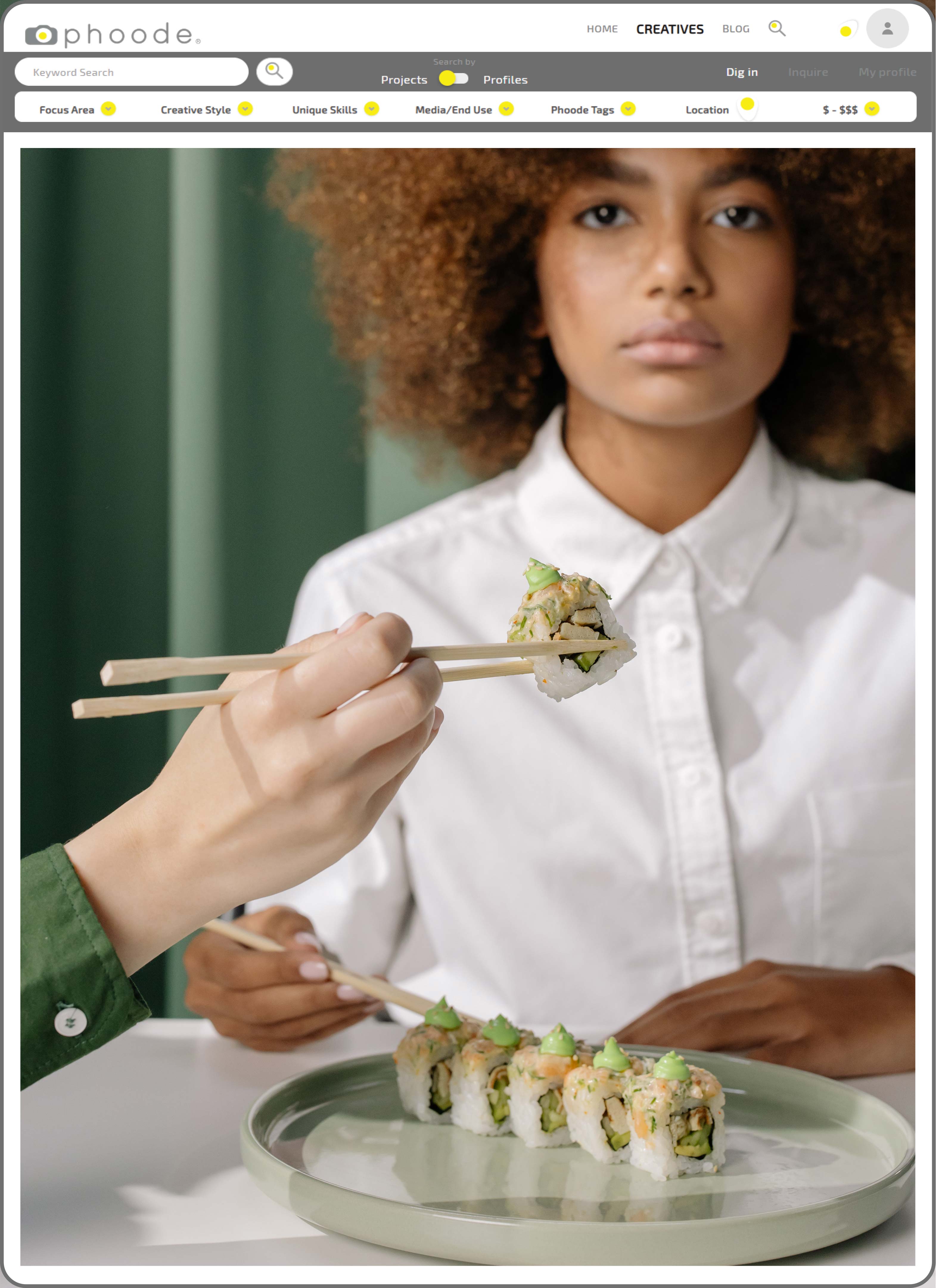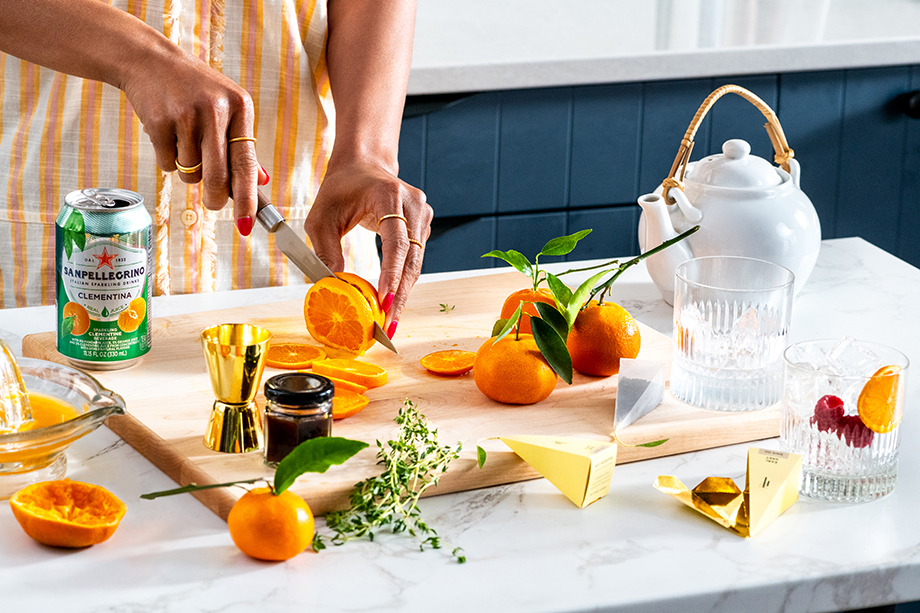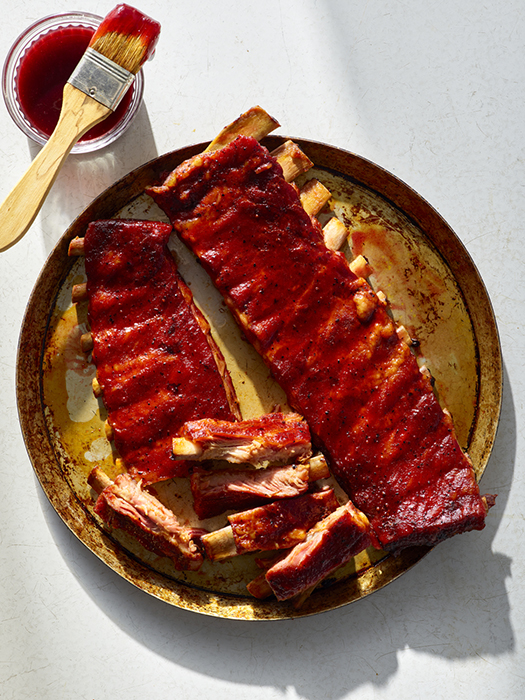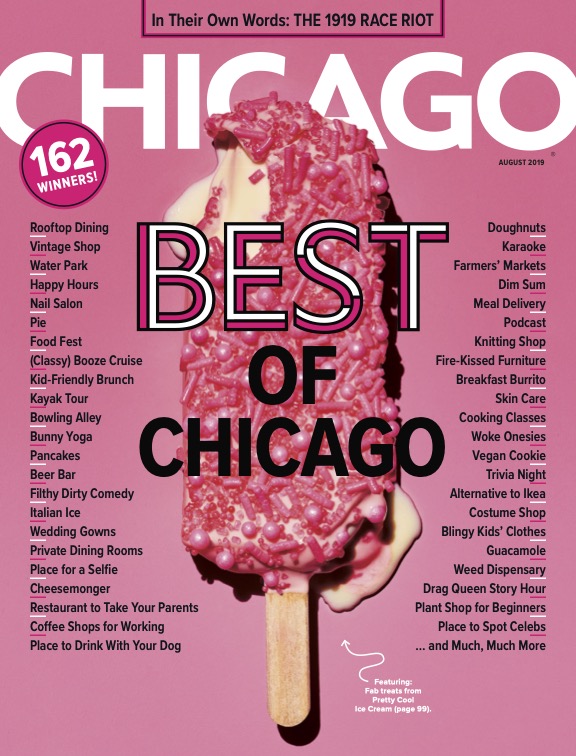The Innovative Uses of Food Packaging in El Anatsui’s Recycled Art
Our influential artists of the week are only sometimes food photographers. Other times, they are visionaries that make a statement about food or the food and beverage industry. El Anatsui is just that, innovative and poignant. You may not see a pictorial representation of food or drink in his work, yet the source of his materials and their life before being re-purposed creates an interesting dialogue about consumption as a whole.
Who Is El Anatsui?
Born in Ghana in 1944 and working from a small town in Nigeria, El Anatsui is featured in the most prominent art museums around the world. He taught art in Nigeria while working on sculptures made from more traditional materials like wood or clay. In 1999 El Anatsui found a material he would use for sometime: metal seals and bottle caps of liquor bottles. From this beverage packaging he started to create multifaceted recycled art sculptures, sometimes of epic proportions. The woven pieces achieve fantastic forms, sometimes according to each museum curator’s taste. El Anatsui leaves it to their discretion how to install his art.
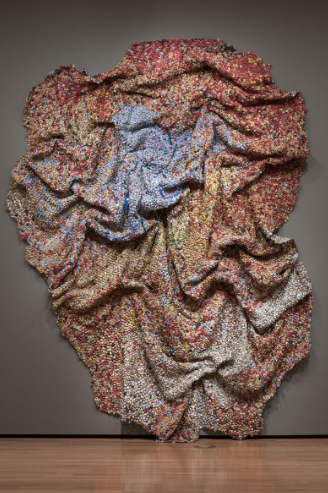
Consumption
Alcohol was introduced to native Africans by colonialists. Liquor is, nearly objectively, a counter-productive substance that can deteriorate the quality of one’s life. The history of colonialism in Africa, completely objectively, presents challenges to this day that prevent Africa’s productivity and success. El Anatsui has stated that alcohol is a fitting symbol of the earliest contact between Europeans and Africans. By not only reusing products, but also retelling history, his recycled art turns the counter-productive into the productive.
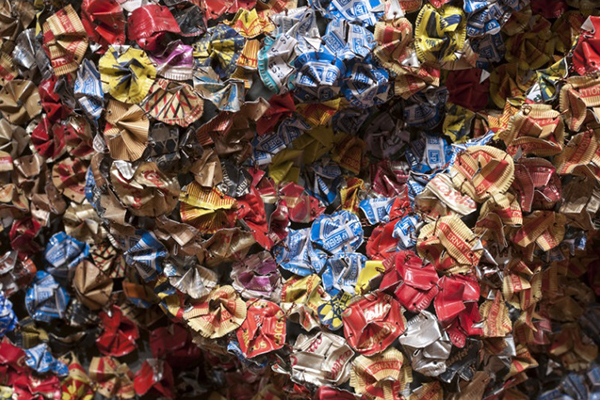
Without proper trash facilities the artist can find heaps of discarded beverage packaging. When we view his pieces, even though beautiful, the all too familiar images of overflowing garbage dumps comes to mind as well. Always present in his bottle cap sculptures is a back story of colonial consumption of African resources, and the environmental impact of modern food and beverage packaging. Because of the immediacy of environmental problems in our lives, many artists who work with food should think about how their work relates to overconsumption and packaging, if not to make a point, to avoid being misinterpreted.
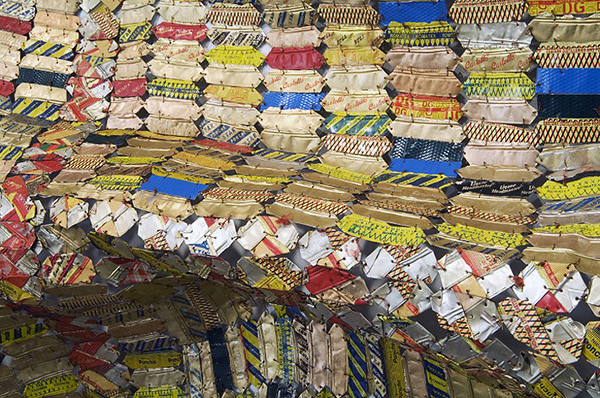
Old and New Traditions
A whole other narrative exists when the bottle cap sculptures are compared to kente cloth, the native clothing of Ghana. Compare the recycled art sculpture above with the cloth below:
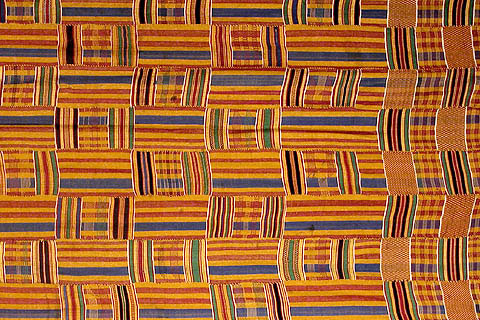
The influence of his country’s traditional fabric (which comes in many patterns, not just the one above) in his work is undeniable. By turning a negative (packaging waste) into a positive (beautiful traditional objects) his work could symbolize a hopeful future of Africa’s own rebuilding without sacrificing its identity and traditions. Obtaining such cloth like forms from a rigid material, metal, is part of what makes his sculptures so interesting.
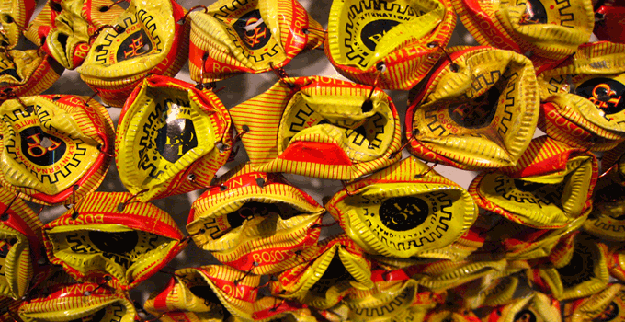
Find Your Material and Use Repetition
Repetition is constantly used to create visual interest in contemporary art. Food styling and photography are no exceptions. One of the bottle caps above by itself, doesn’t really evoke much visually or conceptually. Imagine a cross section of an onion by itself… Now, imagine two hundred cross sections with light shinning through them… Lastly, imagine you’ve combined three different colors of onion. The graphic possibilities of using the same form in large numbers are endless.
